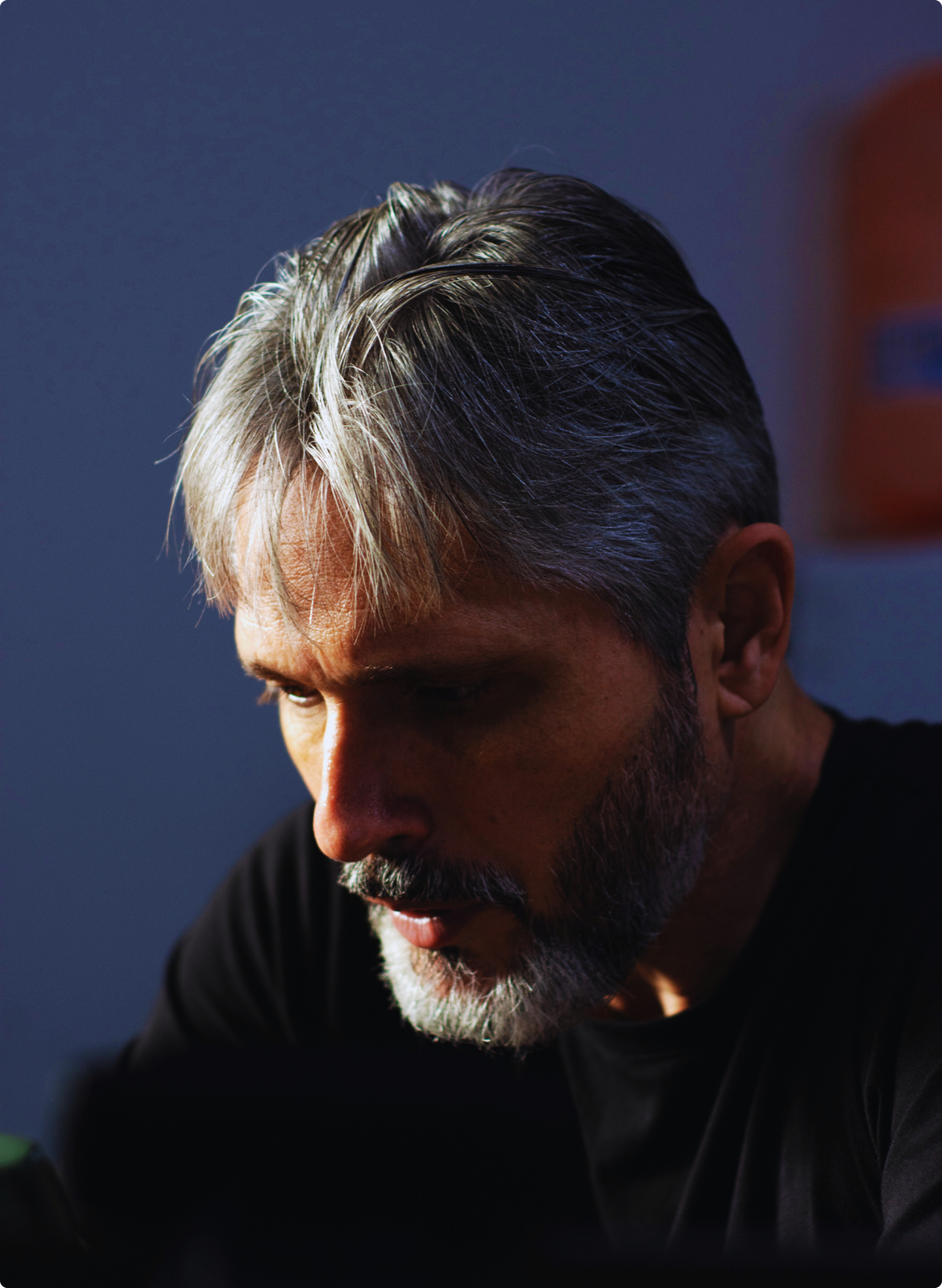
Solano Aquino was born in Apucarana, a small town in the interior of Paraná, in a home where art was a silent language. The son of an amateur painter, he learned early on to see painting as a form of listening — not of speech.
His abstract work is born from this emotional legacy and takes shape as a pursuit of sensations, not answers. Solano does not represent — he proposes. His works do not narrate — they awaken. Among layers, overlays, and textures, what pulses is the unconscious — what we feel before we understand.
Trained in psychoanalysis, he brings that perspective into his art without theorizing it. He prefers to provoke the viewer’s sensibility, evoking fragmented memories, diffuse dreams, inner states. References to names like Rothko, Kandinsky, Mitchell, or Richter lie less in aesthetic and more in freedom.
Solano paints on the ground — literally. He lays the canvas on the floor, interacts with the texture of the world, allowing time and even the touch of those who pass by to leave their mark. Chance becomes a coauthor. Every footprint, every surface relief becomes part of the visual narrative.
More than objects, his works are living surfaces — traces of presence and memory. His painting is gesture, is listening, is affection inscribed in space. An invitation to feel — not to understand.
“I express what I cannot say. I record what memory erases. I create to provoke — not the gaze, but the feeling. The gesture is mine, but the meaning is yours. Each layer is a question, a dream, a trace of presence. My art does not show — it proposes. And if you felt something, then it happened.”